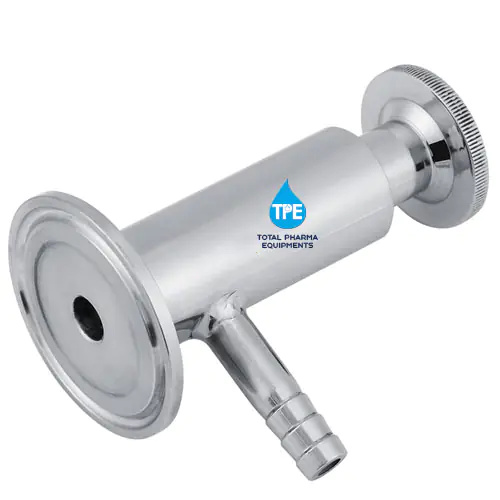
SAMPLING VALVE
- Port Size:
- Sampling valves come in various port sizes to accommodate different flow rates and process conditions. The port size determines the diameter of the opening through which the sample is drawn.
- Connection Type:
- Sampling valves are available with different connection types, such as threaded, flanged, or sanitary connections. The choice of connection type depends on the specific requirements of the sampling application and the compatibility with the existing process equipment.
- Material Compatibility:
- The size of the sampling valve should be selected based on the material of construction to ensure compatibility with the sampled fluid. Common materials include stainless steel, brass, and plastic.
Description
- Representative Sampling:
- Sampling valves are designed to provide representative samples, ensuring that the extracted sample accurately reflects the composition of the process fluid. This is crucial for accurate analysis and quality control.
- Minimized Contamination:
- Sampling valves are constructed to minimize the risk of sample contamination during extraction. Proper sealing and design prevent outside air or contaminants from entering the sampling system.
- Versatility:
- Sampling valves are versatile and can be used in various industries, including pharmaceuticals, food and beverage, water treatment, petrochemicals, and more. They are adaptable to different process fluids and environments.
- Ease of Use:
- Sampling valves are designed for ease of use, allowing operators to collect samples without interrupting the main process. This facilitates efficient sampling during routine monitoring or quality control procedures.
- Cleanability:
- Many sampling valves are designed for easy cleaning and sterilization, making them suitable for applications in industries where hygiene is critical, such as pharmaceutical and food processing.
- Adaptability to Process Conditions:
- Sampling valves are designed to withstand various process conditions, including high pressures and temperatures. This adaptability ensures reliable performance in diverse industrial settings.
- Compliance with Standards:
- Sampling valves are often designed to comply with industry standards and regulations. This is important in industries where adherence to specific sampling protocols is required for regulatory compliance.
- Different Types for Different Applications:
- Various types of sampling valves are available, including needle valves, diaphragm valves, and ball valves. The choice of valve type depends on factors such as the nature of the process fluid, pressure, and temperature conditions.
- Reduced Risk of Operator Exposure:
- Sampling valves can be operated remotely or with minimal exposure of operators to the process fluid, reducing the risk of exposure to hazardous materials or extreme process conditions.
- Minimal Dead Space:
- Sampling valves are designed with minimal dead space to prevent the accumulation of residual fluids between sampling events. This feature helps maintain sample integrity and avoid cross-contamination.
- Customization:
- Some sampling valves can be customized based on specific requirements, such as the addition of purge ports, extension handles, or other features to enhance functionality.
- Compatibility with Analytical Instruments:
- Sampling valves are compatible with various analytical instruments, allowing seamless integration into laboratory setups for testing and analysis.
- Durability:
- Sampling valves are often constructed from durable materials, ensuring long-term reliability and resistance to corrosion or wear.
- Instrumentation Integration:
- Sampling valves can be integrated into automated process control systems or sampling systems with monitoring instruments, enhancing overall process efficiency and data collection.
- Traceability:
- Some sampling valves are designed to facilitate traceability by allowing for proper labeling or identification of samples, ensuring that samples can be linked to specific process conditions or batches.
- Pressure and Temperature Ratings:
- Sampling valves are available with different pressure and temperature ratings to match the specific conditions of the process being sampled.
- Multiple Sample Ports:
- Some sampling valves may have multiple sample ports, allowing for the collection of samples at different points in the process for more comprehensive analysis.
- Emergency Shut-off Capability:
- In some applications, sampling valves may include emergency shut-off features to quickly isolate the sample port in case of emergencies or system malfunctions.

